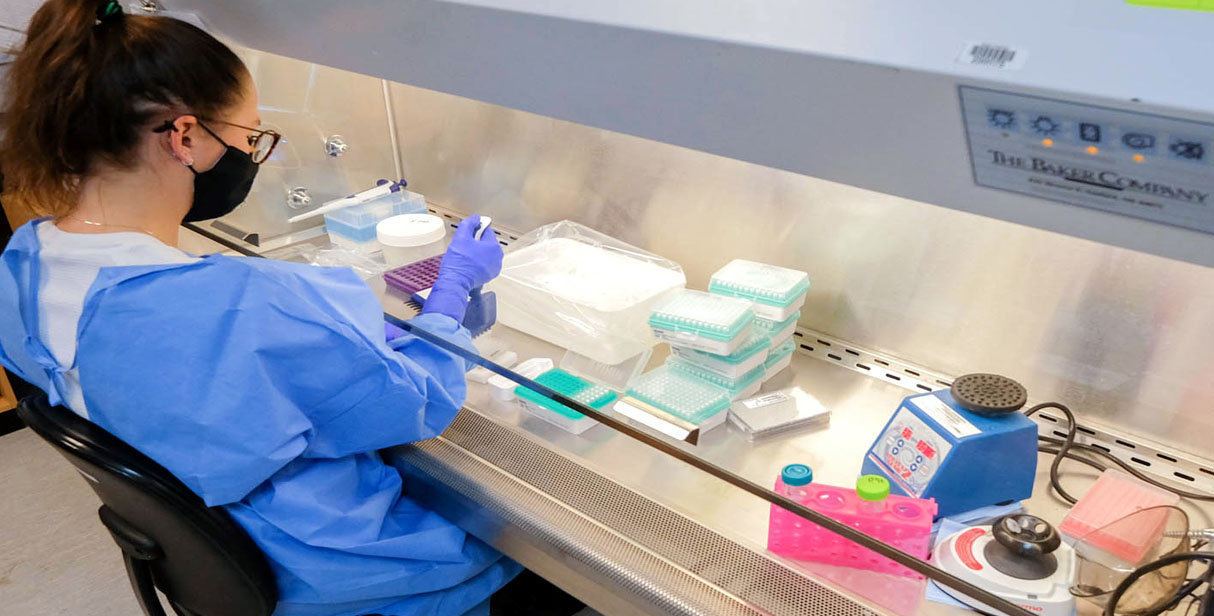
A coordinated, province-wide approach makes B.C. a leader in COVID-19 testing
For a number of years prior to the pandemic, B.C. had been moving towards a more integrated and coordinated planning and service delivery model for laboratory medicine and pathology. In 2019, Provincial Laboratory Medicine Services (PLMS) was created as part of the Provincial Health Services Authority (PHSA) by bringing together the BC Agency for Pathology and Laboratory Medicine, Provincial Blood Coordinating Office, and Lower Mainland Laboratories.
“Taking a province-wide approach to laboratory medicine has many benefits including improved accountability and governance,” says Craig Ivany, Chief Provincial Diagnostics Officer at PHSA, “but we really saw the full value of this new structure when the pandemic hit, as it allowed us to move quickly and effectively to coordinate the COVID-19 response across B.C.”
In March 2020 to meet the rapidly increasing demands for COVID-19 testing, PLMS initiated a province-wide Emergency Operations Committee (EOC) that included operations and medical leadership from each regional health authority, the First Nations Health Authority and representatives from private sector laboratories and key PHSA corporate groups including Human Resources, Supply Chain, Communications, Finance and Information Management Information Technology Services.

Thanks to the coordination of the EOC and the dedicated work of staff at PMLS and across the health care system, B.C. has been a national leader in laboratory testing throughout the pandemic.
Some of the laboratory system’s achievements during this extraordinary time include:
Flattening the curve through testing: Within weeks of the sequence of the SARS-CoV-2 viral genome being published, scientists at the BCCDC Public Health Laboratory (PHL) had developed a Rapid Polymerase Chain Reaction (PCR) test to detect the virus that was then deployed at sites across the province. At a time when the availability of COVID-19 testing was still very limited in many locations, public health officials in B.C. were able to recognize that the virus was transmitting in the community and was not well contained. These findings supported the implementation of travel restrictions and other public health measures that helped B.C. rapidly flatten the curve of the pandemic’s first wave before the health care system became overloaded.

Ramping up capacity for second and third waves: By the time the second wave arrived in fall 2020, there was rapid PCR testing at more than 20 sites in B.C. and testing capacity was in place to ensure that turnaround times did not suffer, preventing the testing backlogs seen elsewhere. PMLS also worked with regional health authorities to set up an innovative specimen receipt and distribution site in an empty convention hall at the Vancouver Convention Centre, which allows for the redirection of specimens to laboratories that have capacity on an hour-by-hour basis. By late fall 2020, the laboratory system had achieved the ambitious goal of increasing overall testing capacity to 20,000 tests a day.
Saline rinse/ gargle testing for school-aged children: Developed in partnership between the BCCDC PHL and BC Children’s Hospital laboratories, this innovative test spares children the need for an uncomfortable nasopharyngeal swabbing procedure. It was introduced in time for the return to school in September 2020 and has since been implemented at sites all over the world.
A national leader in Whole Genome Sequencing: Since the earliest days of the pandemic, the BCCDC has performed Whole Genome Sequencing on samples of the SARS-CoV-2 virus from people who tested positive in B.C. Whole Genome Sequencing allows scientists and public health officials to see how the virus is spreading at a population level, identify and track new variants of concern, and measure vaccine effectiveness. As if July 17, 2021, whole genome sequencing has been performed on 45,627 specimens. This is by far the most genomic sequencing done in any Canadian province.
The mortality from COVID-19 in British Columbia (approximately 30/100,000 population on April 15) is approximately half the mortality for Canada as a whole, and would place B.C. at 80th on the list of all countries compiled by the Johns Hopkins University Coronavirus Resource Center. This is thanks to the work of people in every area of the health care system, including all the PMLS staff who have contributed to making fast, accurate testing available to the people of B.C. at every stage of pandemic.
As we look towards the future of health care after the pandemic, the lessons we’ve learned from COVID-19 and the infrastructure we’ve created will allow for more rapid diagnoses, delivered closer patients.
“Over the course of the pandemic, we’ve really seen the value of a coordinated provincial laboratory system in rapidly ramping up testing capacity, responding to supply chain challenges and meeting the diverse needs of communities across B.C.,” says Craig Ivany. “As we look towards the future of health care after the pandemic, the lessons we’ve learned from COVID-19 and the infrastructure we’ve created will allow for more rapid diagnoses, delivered closer patients.”

